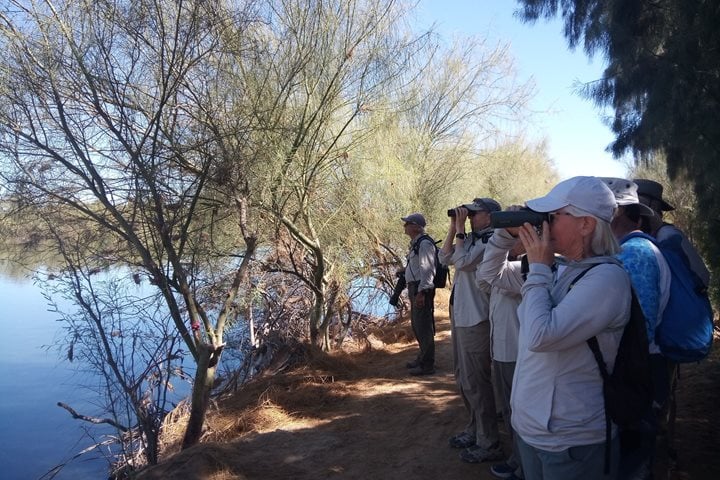The first light of the rising sun found many of us already on shore or navigating the waters off San Esteban Island. Located in the midriff region of the Gulf of California, San Esteban Island is also one of the largest and a wonderful place to explore. We disembarked early in the morning in order to photograph the dramatic desert vegetation and National Geographic Sea Lion silhouetted against the beautiful reds, oranges and purples of sunrise; those of us who chose to ride our inflatable expedition craft accomplished the same with a totally marine perspective.
As the photographers kept busy with their tripods, cameras and other gadgets, groups of brown pelicans and California sea lions chased a school of fish just a few yards from shore, and a solitary osprey delighted everyone with his multiple failed attempts to capture his breakfast. Patience and skill eventually succeeded and later we watched him flying away carrying a big fish. After having breakfast ourselves, we went back ashore and hiked the island looking for some of its endemic species of reptiles and plants. Not long after we started walking up the arroyo, we discovered our first spiny-tailed iguana of the day, placidly basking on top of a rock and completely at ease posing for the variety of cameras clicking a few feet away. Soon, the first specimen of the pinto chuckwalla followed the modeling career of the previous iguana. Both species are endemic to San Esteban Island and are its most charismatic inhabitants.
After leaving her anchorage, Sea Lion headed to our afternoon destination three and a half hours away to the northeast, Rasa Island. Rasa is a small island in the middle of one of the Gulf’s richest areas and the nesting site of about 95% of the world’s population of two seabirds, the elegant tern and the Heermann’s gull. At the beginning of their breeding season, both gulls and terns congregate in big numbers in the waters around the island in preparation for their takeover of the valleys where they incubate their eggs and raise their young.
We cruised around the island looking at and photographing the birds along the shore and were rewarded with amazing views and memories of the huge numbers of elegant terns. We also visited a small islet north of Rasa known as Racito, where California sea lions, blue-footed and brown boobies, brown pelicans, Brandt’s cormorants and other birds were responsible for the use of many more mega-pixels before we finally headed back to our floating home after a full day of beauty and excitement.







